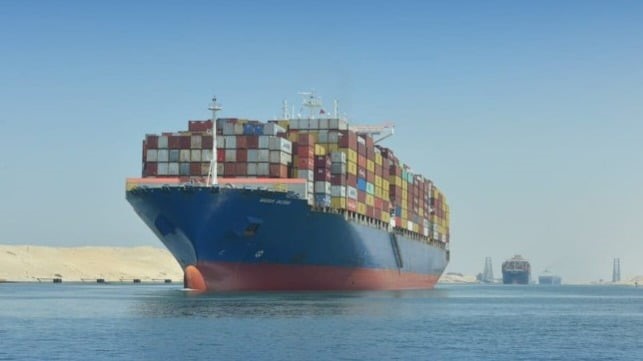
Xeneta Report Highlights Impact Of Red Sea Diversions On Reefer Trade
Shipping Arabia, October 3, 2024 — Xeneta, a prominent provider of shipping market insights, has published an in-depth analysis of the changing dynamics in reefer trade routes from North Europe to the Persian Gulf and Southeast Asia, emphasizing significant disruptions caused by geopolitical issues in the Red Sea.
According to Xeneta’s latest data, the long-term contract market average for a 40-foot Reefer High Cube shipping from North Europe to the Persian Gulf surged by 58% to $3,570 as of September 19.
This increase is attributed to the need for rerouting away from traditional shipping lanes due to escalating security concerns.
The revised routes typically involve bypassing the Persian Gulf and Gulf of Oman in favor of the longer Cape of Good Hope route, resulting in notable impacts on service delivery and shipping costs.
These route adjustments were implemented to reduce risks from conflicts in the Red Sea, particularly the ongoing tensions involving Yemeni Houthis and Israeli vessels.
As a result, there have been missed port calls in the Persian Gulf, which are crucial for the delivery of reefer cargoes. Consequently, long-term rates for this route have climbed to an average of $3,570 per unit.
In contrast, the trade route from North Europe to Southeast Asia has displayed a different trend.
Initially, long-term rates between these regions were closely aligned, but by September, a significant gap of $959 per unit emerged, reflecting the varied impact of the Red Sea crisis on similar trade routes.
The Southeast Asia route, which has not been affected by the rerouting challenges impacting the Persian Gulf service, has maintained more stable pricing, with market rates ranging between $2,250 and $3,000 throughout 2024.
Demand for reefer shipments from North Europe to Southeast Asia increased by 6.8% in the first seven months of 2024, in contrast to a more modest 2.5% rise in demand for shipments to the Middle East.
This divergence in trends is largely attributed to the disruptions caused by the Red Sea conflicts, which have not only altered trade flows but also reshaped demand patterns.
The reefer trade to the Middle East remains larger in volume but has exhibited less dynamic growth compared to Southeast Asia.
Xeneta’s analysis warns of potential challenges ahead for the upcoming peak season, particularly concerning the reefer trade to the Middle East.
This situation serves as a critical juncture for stakeholders to evaluate the effects of geopolitical instability on shipping routes and prepare for possible shifts in market dynamics as the year progresses.


